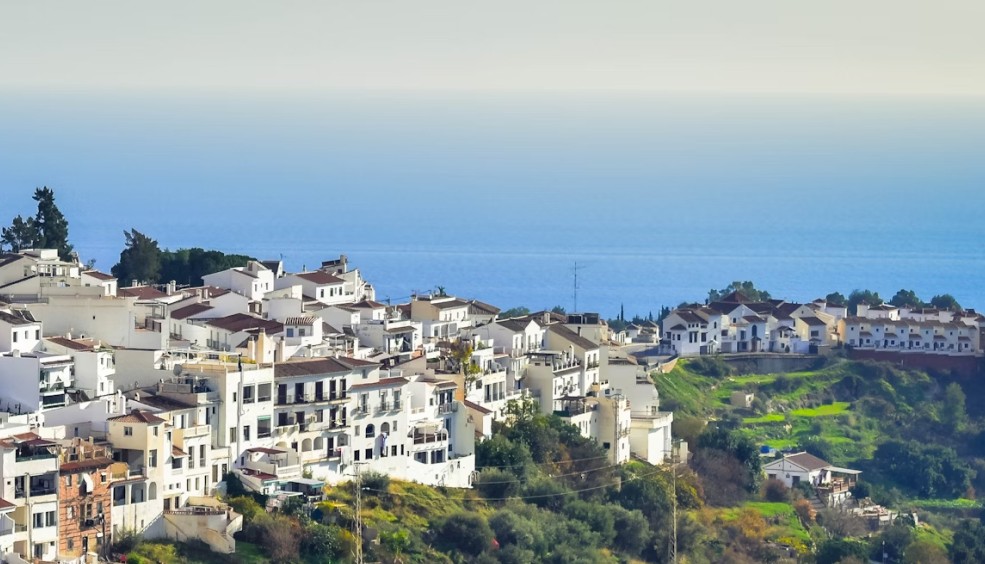The best white towns in Andalusia to enjoy autumn
Enjoy autumn in Andalusia by visiting white towns like Ronda, Grazalema, Mojácar, Frigiliana, Vejer de la Frontera, Zuheros, Arcos de la Frontera and Cazorla. Narrow whitewashed streets, breathtaking viewpoints, local food, nature and lots and lots of art.
more info10 coves on the Costa Brava with good beaches and restaurants
From Blanes to Portbou, the Costa Brava is an idyllic place thanks to its beautiful coves, nature, exceptional cuisine and many charming towns.
more infoTop natural pools in the Canary Islands: come and take a dip!
Natural seawater pools have all the benefits of the beach and a swimming pool. There are many of these pools across the Canary Islands and they are simply wonderful.
more infoThe Best Beaches at Cabo de Gata
The Cabo de Gata-Níjar Nature Reserve is one of Spain’s most beautiful, unusual and yet arid landscapes – possibly one of the most striking ensembles in Europe, too. Magmatic in origin, this massif with its bizarre forms and sparse but interesting vegetation has the added value of skirting the coast, encompassing a considerable number of beaches and coves with stunning blue water, in stark contrast to the bare surrounding landscape of rock and sand.
If you are planning to roam through this magnificent nature reserve in south-east Almería, be sure to put on sturdy footwear, wear a hat and stock up on water and provisions, as most of these beaches are wild and lack amenities. You are encouraged to hike between the beaches and the few villages dotted about the area. Many of the spots we are taking you to are difficult to reach, although well worth the effort, as awaiting you are some spectacular views and a dip in splendid, crystal-clear waters. Let’s be off, then!
Playa de los Muertos
This beach is separated from its parking lot by a steep 700-metre slope, so you are urged to take it easy. At the end of the narrow track you come to a wide pebble beach with blue water where you can have a soothing bathe. As is the case on most beaches in Cabo de Gata, nudists and swimming-trunk die-hards coexist in perfect harmony.
Cala de Enmedio
This cove lies one and a half kilometres from Agua Amarga, an old fishing port currently sought after by tourists. Access is only by boat or on foot. On reaching this splendid cove, you will be dazzled by the fine white sand and the two fossilised sand dunes flanking it, striking a contrast with the turquoise-coloured seawater. A little paradise on earth.
Cala de San Pedro
This small cove, located just over an hour’s walk from the fishing village of Las Negras, differs from the rest of the beaches in the area in that it boasts a sweet-water spring. On account of this, there is more vegetation in the cove, enabling a hippy community to live here all year around. The water source also accounts for the fact that the Castle of San Pedro was built here in the 16th century as a defence against assaults by Berber pirates. The castle ruins are currently open to visitors.
Playa de los Genoveses
This beach, stretching for over one kilometre, with its fine sand and crystal-clear water, is one of the most popular and most frequented in Cabo de Gata. Located just over a kilometre from San José, you can reach it on foot. However, if you are not inclined to doing exercise, there is a bus that you can take to the beach. If you’re driving there, bear in mind that the parking lot is not very spacious and can fill up quickly in summer.
Playa de Mónsul
Having been turned into a film set by Steven Spielberg in his Indiana Jones and the Last Crusade, this is a must-visit beach, particularly because of the spectacle provided by the encircling ensemble of huge eroded lava rocks. Situated four kilometres from San José, it can be reached by car or bus (this is the most advisable option in August).
Cala Rajá
Halfway between San Miguel de Cabo de Gata and San José, this is the most uninhabited cove of all. It has pleasant fine sand and it is worth climbing the surrounding rock formations to see the views of the El Dedo reef and the Cala de la Punta Negra.
Book your Vueling to Almería and discover the stunning beaches of Cabo de Gata!
Text by Los Viajes de ISABELYLUIS
Images by Mir Zab, horrapics, Pablo Piso , jarp32, Baldomorejon
more info





